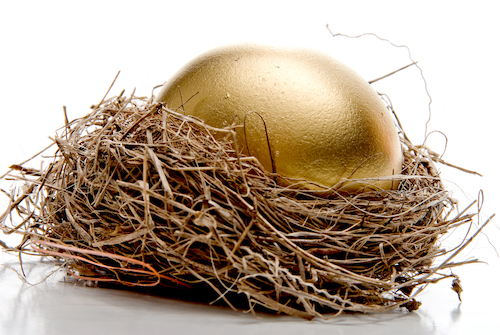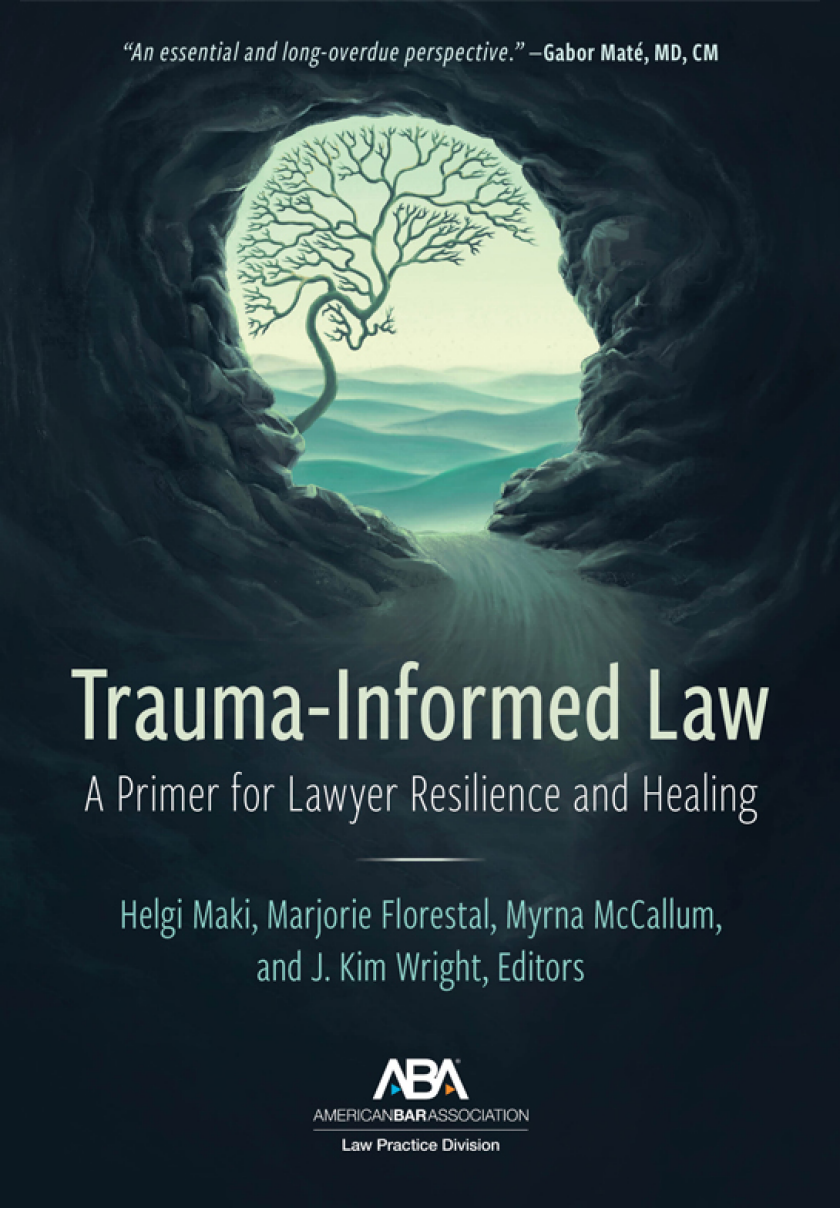An Executive’s Guide to Choosing When—and When Not—to Patent
“The tradeoffs involved in deciding whether to patent an AI system and its outputs, or maintain them as trade secrets, are complex.”
In today’s high-tech landscape, the ancient fable of the goose that laid the golden eggs imparts profound wisdom. The farmer in that tale weighed the decision to continue accumulating wealth slowly by selling the golden eggs that his magical goose laid (one per day) or taking a risk by killing the goose to harvest all of the gold within it at once. (Ultimately, the farmer chose the murderous path only to discover the goose did not contain any riches.)
Just as the farmer faced thorny decisions in the tale, modern tech executives grapple with complex choices between immediate returns and long-term potential while also maintaining a competitive edge.
In the real world, an artificial intelligence (AI) system that can generate patentable outputs (such as designs for new drugs) stands as the metaphorical “goose” while the inventions it produces are analogous to the “golden eggs.” Steadfastly guiding this delicate dance is the patent attorney with expertise in AI technology.
AI Patents: The Web of Choices and Their Outcomes
Crafting a sophisticated AI system, such as training a neural network, is a significant undertaking. Such “geese” are capable of spawning groundbreaking designs or solutions, the “golden eggs.” For instance, a neural network might design innovative architectural patterns, optimize logistics for businesses, or learn how to drive a car autonomously. Protecting these treasures requires a strategic compass to navigate the choices at hand. Enter the patent attorney’s astute guidance, both due to the tradeoffs described in this article, and because it is necessary to carefully navigate the requirement for patent-eligibility by demonstrating that the claimed AI’s functionality constitutes a practical application and not merely an abstract idea.
The savvy executive, guided by the patent attorney, has an important and strategic business decision to make, one rooted in an understanding of IP law and its impact on a business’ bottom line and its ability to stave off competition. Below are the primary options, along with pros and cons for each.
1. Patent the AI System (The Goose):
-
- Strategy: Obtain a patent on the AI system, which is the equivalent of putting a fence around the goose so that people could see it but not touch it or use it to lay eggs without the farmer’s permission. As a result, you have a legal right to block anyone from making, using, or selling that AI system, just as the farmer could stop anyone from stealing the golden goose and using it to lay eggs. However, not patenting the golden eggs would be like leaving a hole in the fence through which people could grab them and use them without the farmer’s permission.
- Pros: Grants the advantage of blocking competitors from using a similar AI system to devise their own innovations for around 20 years.
- Cons: Disclosing the AI system’s blueprint exposes it to competitors. After the patent’s expiry, this AI system is free game, enabling competitors to use it without restrictions. Even during the patent’s lifetime, it may be subject to invalidation if it is not tied to a sufficiently practical application. Furthermore, not patenting the AI system’s creations enables competitors to use those freely as well.
2. Keep the AI System Secret and Patent Its Outputs (The Golden Eggs):
-
- Strategy: Don’t patent the AI system or disclose it to the public. Instead, use it in secret to generate inventions, and patent those inventions directly (without revealing how they were created using the AI system). This is analogous to the farmer keeping the golden goose under lock and key and then selling its golden eggs.
- Pros: The AI system, be it a neural network or another model, remains proprietary. Simultaneously, individual outputs, like novel drug designs or advanced algorithms, receive patent protection. Demonstrating that the AI system’s outputs constitute patentable subject matter may be easier than doing so for the AI system itself.
- Cons: If rivals independently devise a comparable AI system, there’s no halting them from using it, including leveraging it to produce and patent their own groundbreaking outputs.
3. Keep Both the Goose and the Golden Eggs as Trade Secrets and License Them Privately:
-
- Strategy: Don’t patent the AI system or disclose it to the public, and don’t sell its outputs publicly. Instead, keep everything secret, and privately license either or both of (1) use of the AI system and/or (2) the outputs of the AI system. The farmer could do this by selling tickets to private showings of the goose and its eggs, and by giving ticket buyers the option to buy eggs once they’re inside (possibly with a requirement to only show the eggs privately themselves once purchased.)
- Pros: Consolidates control over both the technology and the innovations that it generates, presenting diverse monetization pathways, without exposing them to the public and creating opportunities for them to be copied by competitors.
- Cons: For both the AI system and its pioneering outputs, the absence of patent protection is a risk: If trade secrets get disclosed or competitors achieve similar solutions independently, defensive options are limited.
4. Patent Both the Goose and the Golden Eggs:
-
- Strategy: Patent the AI system, and also patent inventions generated using the AI system, as the farmer could do by enclosing the goose in a see-through fence that was tight enough that no one could access the goose or its eggs without the farmer’s permission.
- Pros: Holistic protection might offer an advantage, safeguarding both the AI system and its prolific applications.
- Cons: The patent’s public nature demystifies both the AI system and its outputs, thereby giving competitors blueprints for recreating and improving on both. Also, a patent on the AI system might make it more difficult to patent the subsequent outputs it creates, if public disclosure of the AI system makes its outputs obvious. Furthermore, demonstrating that both the AI system and its outputs are patentable subject matter will require particularly careful attention to vague and often-shifting legal requirements.
The Perils of Choosing Poorly
As the examples above, and their counterparts in the real world of AI and the fictional world of the golden goose, illustrate, the tradeoffs involved in deciding whether to patent an AI system and its outputs, or maintain them as trade secrets, are complex. Adding to this complexity are that those choices are highly fact specific and often involve making similar choices about additional aspects of an AI system, such as its training data, the method that is used to train it, and the techniques that are used to refine the AI system’s outputs. And all of these choices must be evaluated in light of the business model(s) that will be applied to the AI system and its outputs.
The risks of failing to weigh the tradeoffs between patent protection and trade secret protection wisely include:
- Lost Protection: Possible oversights in IP strategy might expose valuable innovations. For example:
- If you don’t patent an AI system, a competitor could make and use that system (including using that system to create additional inventions), and you would have little or no ability to stop it. If you instead rely on trade secret protection for the AI system, you are banking on your competitors’ inability to create a similar system themselves, which can be a risky bet.
- Similar risks apply to the outputs of your AI system. If they are patentable themselves, then not patenting them enables your competitors to make and use those outputs without your permission. Although trade secret protection may be a viable option, you must consider carefully how easy it would be for competitors to reverse engineer or independently recreate those outputs themselves, both of which would bypass your trade secret protection.
- Legal Pitfalls: Missteps can lead to infringement, litigation, and financial repercussions. For example, we haven’t discussed the value of performing clearance (freedom to operate) investigations before commercializing your AI system and its outputs in order to gain confidence that those elements do not infringe the IP rights of others. Poorly crafted patents, written by patent attorneys without AI expertise, can result not only in gaps in your IP protection, but also in challenges to the validity of your patents that can be expensive and time-consuming to defend against. Any such errors and omissions can be costly, not only in terms of attorneys’ fees, but also in the lost profits that can result from the inability to exclude your competitors from the marketplace, which is the primary purpose of IP protection.
- Competitive Exposures: Rivals fortified with well-crafted IP strategies could overshadow you, diluting your unique advantage. Any gaps in IP protection for your AI system and its outputs, especially gaps in patent coverage, can be exploited by savvy competitors who fill those gaps with their own patents. This can weaken or eliminate your ability to block such companies from competing with you, especially if they obtain patents that cover your own products and services.
Tricky Tradeoffs
The narrative of the AI-driven era reflects the lessons of the goose and its golden eggs, albeit amplified. It isn’t enough for executives who are responsible for their companies’ AI strategies merely to avoid falling into the farmer’s mistake of succumbing to short-term greed over long-term satisfaction. Such executives must make complex decisions in the face of a variety of tradeoffs related to protecting AI systems and their outputs, especially tradeoffs between patents—and the broad scope of protection they provide, but only for a limited time and coupled with public disclosure—and trade secrets—which don’t expose innovations to competitors and potentially last forever, but which can effectively be evaded by reverse engineering or independent creation.
Image Source: Deposit Photos
Author: robeo123
Image ID: 2016357
Robert Plotkin
Robert Plotkin is a founding partner of Blueshift IP: Software Patent Experts. He is a trailblazer in IP protection for AI technology and AI-fueled inventions. He obtains software patents for growing […see more]



![Contentions & Expert Reports: A Match Made in [Someplace] | Axinn, Veltrop & Harkrider LLP Contentions & Expert Reports: A Match Made in [Someplace] | Axinn, Veltrop & Harkrider LLP](https://jdsupra-static.s3.amazonaws.com/profile-images/og.16253_0223.jpg)



